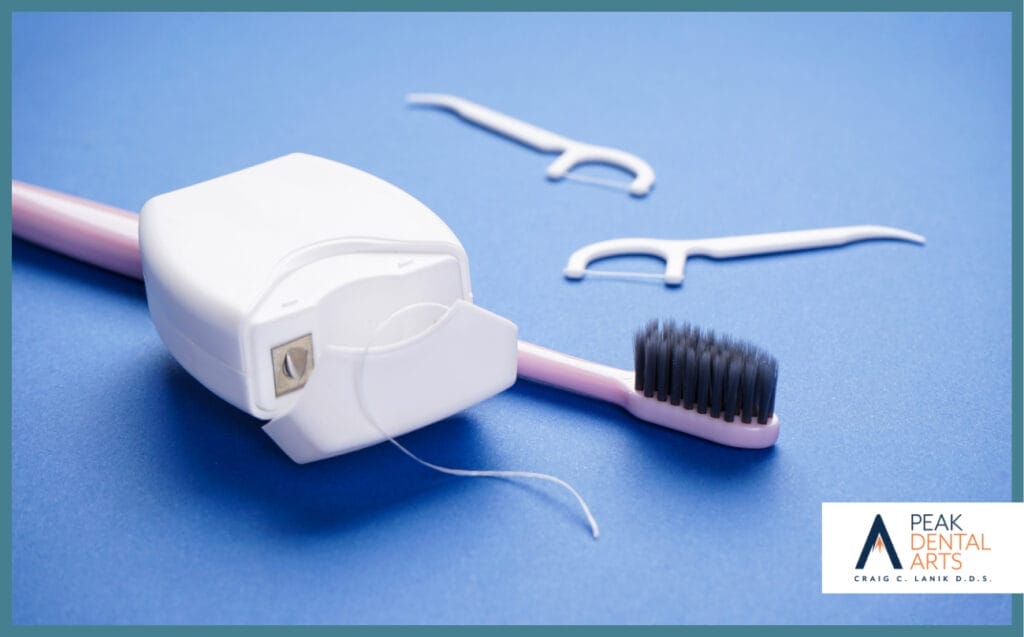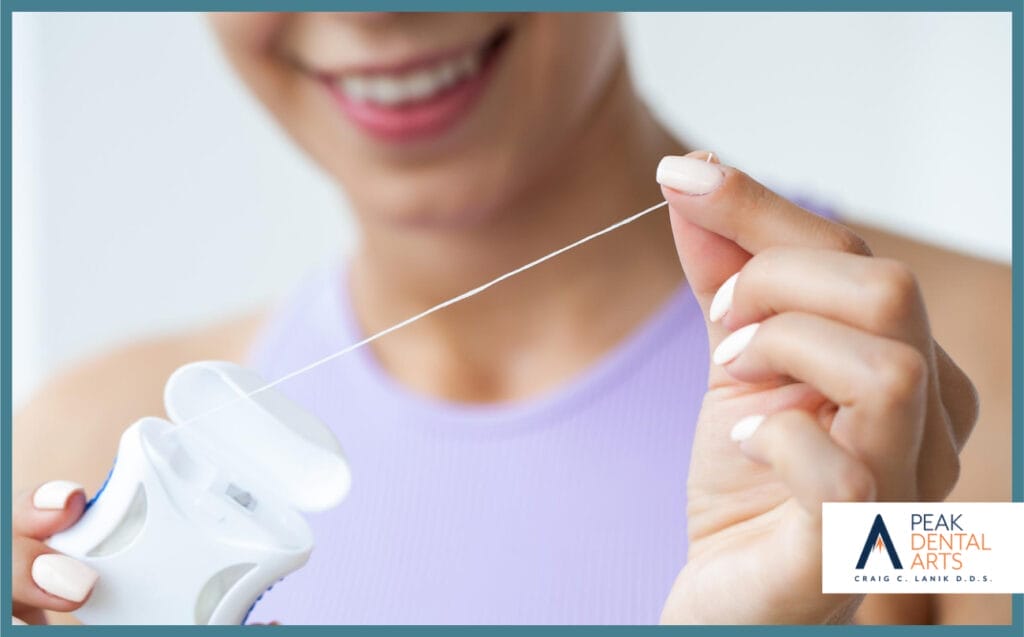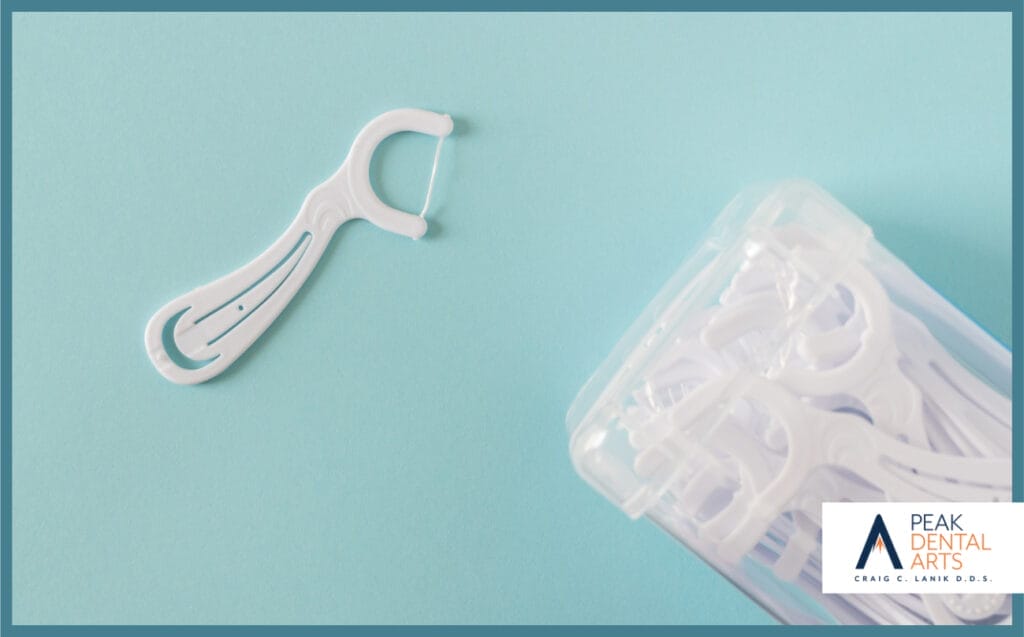When it comes to keeping pesky plaque and food particles and bacteria at bay, the question is: should you stick with traditional dental floss or make the switch to modern floss picks?
With an overwhelming array of options lining drugstore shelves and conflicting advice from various sources, making the right choice for your oral health can feel like navigating a dental maze.
Whether you’re a dedicated flosser looking to optimize your routine or someone struggling to maintain consistent flossing habits, understanding the key differences between these tools can significantly impact your oral health journey.

The Evolution of Dental Floss
The beginnings of dental floss trace back to 1815 when New Orleans dentist Levi Spear Parmly first recommended silk threads for cleaning between teeth. By 1882, Codman and Shurtleff Company launched the first commercial dental floss, with Johnson & Johnson securing the first patent in 1898. A pivotal change occurred during World War II when manufacturers switched from silk to nylon, offering improved durability and consistency.
The 1970s saw the introduction of floss picks, a significant innovation. These Y-shaped plastic tools with pre-stretched floss addressed a common frustration: the difficulty of manipulating traditional string floss, especially for hard-to-reach areas. Their convenience factor sparked a steady rise in their popularity.
Today’s market reflects evolving consumer preferences, with floss picks capturing about 40% of the dental floss market. The global dental floss industry, valued at $4 billion, grows steadily at 4.5% annually. While dental professionals traditionally favor floss string, the rising adoption of floss picks acknowledges a practical truth: the most effective flossing tool is the one people will consistently use.

Traditional String Floss: A Deep Dive
When exploring string floss options, patients typically encounter three main varieties. Unwaxed floss offers a basic but effective option for normal spacing between teeth. Waxed floss features a smooth coating that helps it glide more easily through tighter spaces. Dental tape provides a wider, flatter alternative that works particularly well for larger gaps and dental work like bridges and crowns.
Traditional string floss remains a favorite among dental professionals for several key benefits. Its flexibility allows perfect adaptation to tooth surfaces, letting users wrap the floss in a C-shape around each tooth for optimal cleaning. This maneuverability ensures thorough cleaning below the gum line and between tight spaces. From a practical standpoint, string floss proves remarkably cost-effective – a single container typically lasts several months, making it more economical than disposable alternatives.
However, regular floss does present certain challenges. Many patients experience a learning curve when mastering proper technique, particularly when cleaning back teeth. This can be especially challenging for individuals with arthritis or limited hand mobility. Some users find the process of winding floss around their fingers uncomfortable, which may discourage regular use.
Portability and convenience factor into the equation as well. While a container of traditional floss is compact, using it effectively requires clean hands and often a mirror, making it less convenient for quick cleaning after meals away from home. The process of unspooling and cutting appropriate lengths can feel more cumbersome compared to ready-to-use alternatives.
Despite these considerations, traditional string floss remains the gold standard for interdental cleaning when used correctly. Its superior ability to adapt to tooth surfaces and reach below the gum line makes it a consistently recommended choice by dental professionals.

Understanding Floss Picks
Floss picks come in several variations to suit different needs. Standard picks feature a curved, Y-shaped design with a single strand of floss between the prongs. Premium options often include textured or flavored floss, while some models offer additional features like tongue scrapers or pointed ends for removing larger debris. Many brands also produce specialized picks with wider floss sections for dental work or narrower heads for children.
The popularity of floss picks largely stems from their user-friendly design. Their rigid handle eliminates the need to wrap floss around fingers, making them particularly appealing to beginners and those teaching children to floss. The one-handed operation proves invaluable during multitasking or when dealing with limited mirror access. For busy professionals and travelers, their compact size and individual packaging make them ideal for on-the-go dental care.
Yet floss picks present notable drawbacks worth considering. From an environmental perspective, these single-use plastic tools contribute significantly to dental care waste. While some manufacturers now offer biodegradable options, most picks end up in landfills.
Cost-wise, regular users might find themselves spending considerably more compared to traditional floss – a pack of 90 picks might last a month, whereas a similarly priced container of string floss could last six months or more.
Hygiene considerations also merit attention. The fixed length of floss in picks means users often clean multiple teeth with the same section, potentially transferring bacteria between spaces. While some people attempt to extend their value by reusing picks, dental professionals advise against this practice as it can lead to bacterial buildup and compromised cleaning effectiveness. The inability to wrap fresh sections of floss around each tooth might result in less thorough cleaning, particularly in hard-to-reach areas.
Comparative Analysis
Choosing between traditional floss and floss picks often comes down to balancing effectiveness with user preference. Understanding how each option performs across key areas can help patients make an informed decision that suits their specific needs and ensures consistent use.
Cleaning Effectiveness
Traditional floss and floss picks perform differently across key cleaning areas. Traditional floss excels at between-teeth cleaning by allowing fresh sections for each space, while floss picks use the same segment throughout. For gum line access, traditional floss achieves the optimal C-shape around teeth, reaching below the gum line effectively.
Floss picks’ rigid design often misses these crucial areas. Though picks offer easier back molar reach through their handle, their fixed design can limit proper angle adjustment compared to traditional floss’s adaptability.
User Experience
The learning curve significantly favors floss picks, making them ideal for beginners and children. Most users master the pick technique quickly, while traditional floss requires several days of practice. Time efficiency depends on user expertise—experienced traditional floss users clean as quickly as pick users, but beginners work faster with picks. The one-handed operation of picks enables multitasking, though this might compromise thoroughness.
Comfort and Control
Comfort preferences vary among users. Floss picks eliminate finger strain but may cause discomfort in tight spaces due to their rigid design. Traditional floss offers superior control over pressure and angle, allowing users to adjust for comfort while maintaining effectiveness.
Most dental professionals agree that while traditional floss shows better technical cleaning capability, the most effective option is the one patients will use consistently.
Special Considerations to Consider
Before making a choice between traditional floss and floss picks, several unique factors may influence your decision. Here’s what to consider for specific situations and needs.
Current and Past Dental Work
People with braces, bridges, or implants face unique flossing challenges. Traditional floss, when paired with floss threaders, provides better maneuverability around orthodontic work and between bridge sections.
However, floss picks designed specifically for braces offer helpful angled tips and sturdier construction, making them a practical alternative for some orthodontic patients.
Physical Limitations
For individuals with arthritis, carpal tunnel syndrome, or limited hand mobility, floss picks often prove more manageable than traditional floss. The rigid handle eliminates the need for complex finger wrapping and provides better grip control.
However, some users with specific mobility issues may benefit from handled floss tools that combine traditional floss’s flexibility with an ergonomic grip.
Age-Specific Needs
Children typically adapt more quickly to floss picks, making them an excellent teaching tool for developing good oral hygiene habits. The simple design and colorful options help make flossing less intimidating for young users. When paired with tips for kids to get excited about flossing—like using fun flossers, reward charts, or turning flossing time into a game—floss picks can help create positive associations and lasting habits from an early age.
Elderly individuals often prefer floss picks for their ease of handling, though those with wider spaces between teeth may benefit from the superior control of traditional floss or dental tape.
Environmental Impact
Traditional floss creates significantly less waste compared to floss picks, with a single container lasting several months. While both options typically contain plastic, floss picks generate more waste through their disposable handles and individual packaging.
Some eco-conscious consumers opt for biodegradable traditional floss or reusable handled flossers with replaceable floss heads, though these alternatives may cost more initially.
Making the Right Choice for Your Dental Health Journey
The debate between traditional floss and floss picks ultimately comes down to personal needs, lifestyle, and commitment to consistent use. While traditional floss remains the gold standard for thorough cleaning and environmental sustainability, floss picks offer undeniable convenience and accessibility that may encourage a better flossing routine for some users.
Remember, the most effective dental hygiene tool is the one you’ll use regularly and correctly—so choose the option that best fits your lifestyle while considering the unique factors that matter most to your oral health needs.

